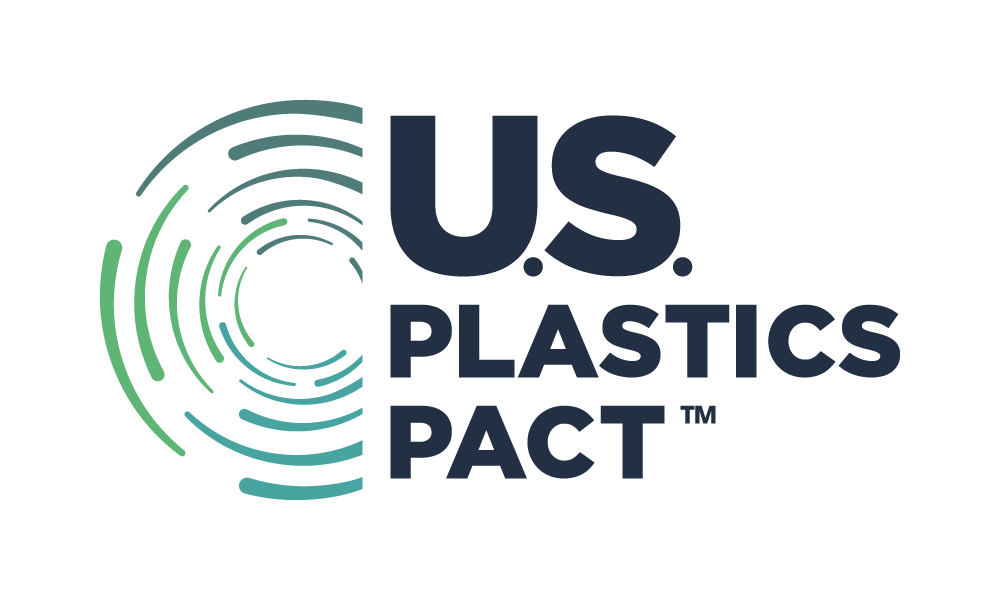Asheville, NC, (January 25, 2022) – Today the U.S. Plastics Pact released its Problematic and Unnecessary Materials List, a first step to accelerating progress toward a circular economy for plastic packaging in the United States. The list identifies 11 items that are not currently reusable, recyclable, or compostable at scale in the U.S. and are not projected to be kept in a closed loop in practice and at scale by 2025.
The publication of the list fulfills a commitment by the U.S. Pact to “define a list of packaging that is problematic or unnecessary by 2021,” an objective in the organization’s Roadmap to 2025. The list was developed by U.S. Pact members – more than 100 businesses, non-profit, and government organizations. These “Activators” will develop guidance on circular alternatives to eliminate the items on the list by 2025.
The U.S. Pact’s CPG, retailer, and converter Activators produce 33% of plastic packaging in scope in the U.S. by weight. In 2020, before the establishment of the list, 66% of business Activators were already making individual plans and taking steps to wholly eliminate specific materials, formats, and components or move from non-recyclable to recyclable package designs.
The U.S. Pact’s Problematic and Unnecessary Materials List is comprised of the following items (listed alphabetically):
- Cutlery*
- Intentionally added¹ Per- and Polyfluoroalkyl Substances (PFAS)²
- Non-detectable pigments such as Carbon Black
- Opaque or pigmented PET – Polyethylene Terephthalate bottles (any color other than transparent blue or green)
- Oxo-degradable additives, including oxo-biodegradable additives
- PETG – Polyethylene Terephthalate Glycol in rigid packaging
- Problematic Label Constructions – This includes adhesives, inks, materials (e.g., PETG, PVC, PLA, paper). Avoid formats/materials/features that render a package Detrimental or Non-Recyclable per the APR Design® Guide. Labels should meet APR Preferred guidance for coverage and compatibility and be tested in any areas where this is unclear.
- PS – Polystyrene, including EPS (Expanded Polystyrene)
- PVC – Polyvinyl Chloride, including PVDC (Polyvinylidene Chloride)
- Stirrers*
- Straws*
*When non-reusable, non-recyclable, or non-compostable per U.S. Pact definitions and provided as an ancillary item to the primary container. For instance, a packet of plastic cutlery provided with a prepared salad or a straw/stirrer provided with an on-the-go beverage would be defined as problematic whereas cutlery, straws, or stirrers sold as a product would not.
¹ “Intentionally added” either in the package or in the manufacturing of that package.
² “PFAS” or perfluoroalkyl and polyfluoroalkyl substances are defined as the class of fluorinated organic chemicals containing at least one fully fluorinated carbon atom at or above 100 parts per million, as measured in total organic fluorine.
The list applies exclusively to plastic packaging. Medical plastics used in clinical, hospital, and related laboratory and research settings are not included. Definitions used in the criteria derive from the Ellen MacArthur Foundation Global commitment criteria, which provides the framework for the U.S. Pact. Participation in the U.S. Pact is voluntary and does not necessarily signify an individual Activator’s endorsement of the list.
“We thank our Activators for their commitment to working together to deliver on the U.S. Pact’s targets,” said, Emily Tipaldo, U.S. Pact, Executive Director. “The elimination of these problematic and unnecessary materials will enable advancements in circular package design, increase opportunities for recovery, and enhance the quality of recycled content available for manufacturers.”
“As a global signatory and a US Plastic Pact activator, Reckitt will be guided by the Problematic & Unnecessary Materials list to design for a sustainable future. The list represents a collaborative effort to meet ambitious goals and is one of the many steps identified by the Pact towards achieving a circular economy,” said Ron Italiano, Global Director Packaging Hygiene, Reckitt.
“Recycling will only work if we stop pumping contaminants and unrecyclable materials into the system,” said Dr. Anja Malawi Brandon, U.S. Plastics Policy Analyst at Ocean Conservancy, “And among other measures, we need recycling to work if we want to keep plastics out of our ocean. Our research shows that a majority of the trash found on beaches and waterways around the world every year during Ocean Conservancy’s International Coastal Cleanup is effectively unrecyclable. Phasing out these 11 materials will go a long way in cleaning up the recycling stream and our coastlines.”
“At Vinventions, our objective is to be the most sustainable closure company on the planet. As activators of the U.S. Plastics Pact, we take our role and responsibilities seriously. Every day, our teams work to enhance our reuse and recycling, eliminate unnecessary packaging and innovate to make what was once considered waste, a renewable resource,” said, Justin Sternberg, President of Vinventions USA & Vinventions NA.
Materials on the Problematic and Unnecessary Materials List do not meet the U.S. Pact definition of reusable, recyclable, or compostable, known as “Criterion 1,” the criterion deemed most critical by U.S. Pact Activators.
Materials on the list also met one or more of the following concerns:
Criterion 2: Contain hazardous chemicals or create hazardous conditions that pose a significant risk to human health or the environment (applying the precautionary principle) during its manufacturing, recycling (whether mechanical or chemical), or composting process;
Criterion 3: Can be avoided (or replaced by a reuse model) while maintaining utility;
Criterion 4: Hinder or disrupt the recyclability or compostability of other items; and/or
Criterion 5: Have a high likelihood of being littered or ending up in the natural environment.
The U.S. Pact will continue to investigate additional items for potential elimination.
About the U.S. Plastics Pact: The U.S. Pact was launched in August 2020 by The Recycling Partnership and World Wildlife Fund. The U.S. Plastics Pact is part of the Ellen MacArthur Foundation’s Plastics Pact Network, which connects national and regional organizations around the world working to implement solutions towards a circular economy for plastic.
Media inquiries:
To arrange an interview with Emily Tipaldo, Executive Director, U.S. Plastics Pact, or to connect with U.S. Pact Activators, contact:
Tiana Lightfoot Svendsen
tsvendsen@usplasticspact.org
214-235-5351
###




